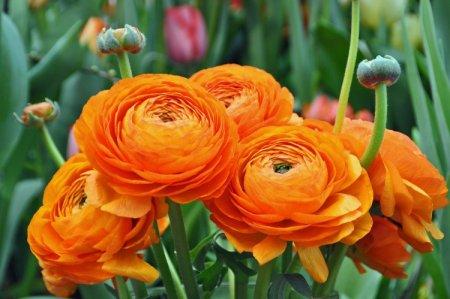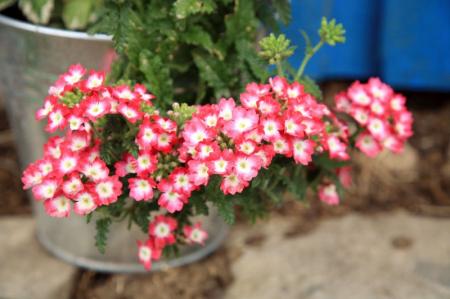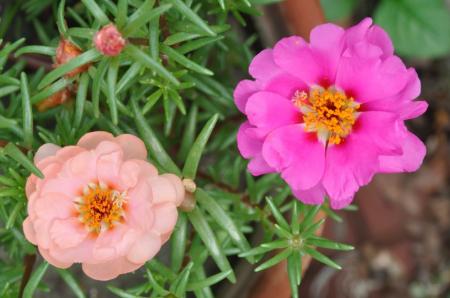
Not sure what to plant on a rocky area? Or maybe you are looking for new and unusual ornamental plants? Pay attention to Heuchera! It is still rarely found in landscape compositions in our latitudes, but the many years of work of breeders have turned it into a magnificent curb or even accent garden decoration!
general characteristics
Dense small heuchera bushes belong to the group of saxifrage, and the name speaks for itself. For a huge variety of shapes and colors of leaves, it is actively used in landscape design. This culture came to us from the rocky regions of North America.
Geuchera is very small, and rare varieties grow above 50 cm. In general, this is a flowering plant, but in some cases the leaves are so good and the flowers are unremarkable that the peduncles are cut off at the stage of appearance. The flowers resemble small bells gathered in panicles.
An interesting feature is that during one season, the foliage of heuchera can change color several times. Moreover, the range of colors varies from light green and orange to purple, red and almost black. The shape and texture of the leaves also varies.

Types of Heuchera
There are about 70 varieties of Heuchera and it is one of the largest groups in its family. Here are some of the most popular varieties!
Blood Red Heuchera
The speaking name fully reflects the main advantage of this variety. Namely, the rich bloody shade of small flowering bells. The variety is drought tolerant, but does not like constant overheating in the sun.

American Heuchera
It is a forest species that loves shady areas very much. It has beautiful, heart-shaped and serrated leaves that change color in spring and fall. A bright pink border runs along the edge of the openwork plate.

Hairy Heuchera
The species is prized primarily for its large ornamental leaves with a velvety texture. In some varieties, leaf plates grow up to 20 cm. But the flowers are inconspicuous.

Small-flowered Heuchera
It is to this species that most varieties with spectacular bronze or brown foliage belong. Plates can be monochrome or spotted, with an interesting metallic sheen. The second feature is high peduncles, up to 70 cm.

Cylindrical Heuchera
The mountainous view is used to the most severe and difficult conditions. At the same time, it is interesting with flowers that are atypically large for Heuchera, especially in contrast to the compact miniature rosette.

Shaggy Heuchera
A spectacular hybrid has collected all the best - large ornamental leaves, charming paniculate inflorescences and a long flowering period. In the season, such a geyhera looks like a real festive fireworks display.

Geyhera care
Geichera needs almost no maintenance, and this is another plus for growing beautiful bushes in your garden. Most of the hassle is needed when planting and rooting. And an adult plant is very self-sufficient.
Temperature
Geykhera is good because it tolerates heat and frost. But the most comfortable temperature for her during the period of active growth is 20-25 degrees.

Lighting
Most Heuchera varieties prefer shaded and semi-shaded areas. But sometimes there are sun-loving species among them, so find out the specifics of a particular variety. But young plants in most cases are best planted in well-lit areas.

Watering
Geichera does not like dampness, but even during a drought it loses its decorative properties. It is important that the soil is constantly moist, but not too wet. Water more often in the spring and summer.

The soil
Geykhera does not tolerate the proximity of groundwater, so it is better to plant it on a hill.If a mistake has already been made, and the plant begins to wilt, you can try to cut the rosette to a healthy part and re-root the stalk. For the rest, Heuchera feels great even on poor, dry and rocky soils. Good drainage is imperative.

Fertilizers and feeding
Frequent feeding for Heuchera is not only useless, but also dangerous. Often, due to an excess of organic matter, rotting of the root system begins. It is enough to apply fertilizers once at the beginning of the season, and then with half the concentration than for other flowers.

Pruning
There is no mandatory requirement to cut the heuchera, so all gardeners are guided by their own experience. Pruning is done to maintain the decorative properties of the bushes. In addition, faded flower stalks need to be removed, because they only waste energy and resources.

Wintering
Heuchera is a fairly frost-resistant plant, so in the southern regions it hibernates without any preparation at all. But if the temperature in winter regularly drops below -10, then it is better to take care of the foliage shelter. You do not need to trim the leaves for the winter, but the peduncles should be removed.

Transplant and rejuvenation
The rosettes retain their decorative effect for up to 3-5 years, but they need to be spilled once a year. For the same reason, it is recommended to regularly replant and rejuvenate the bushes in early spring, with the appearance of the first leaves.

Planting and reproduction of Heuchera
The main thing is to choose the right place for planting, and after that the Heuchera will not cause any trouble. Permeable soil and good deep drainage are essential.
The easiest way to propagate Heuchera is by division. There are no difficulties and tricks at all here: just dig out a bush and divide it into several parts. In the process, we recommend cutting dry and damaged shoots to small buds. Rotten and too long roots can also be removed.
When planting, it is worth adding ash and quite a bit of fertilizer, and be sure to shade the plant for rooting. New healthy roots are formed in about 1.5 months, and then Heuchera can be transplanted to a permanent place.
In addition, the plant can be propagated by seeds in March-April. But it is better to sow them not in the ground, but in a separate container with drainage holes. You need loose, disinfected soil. For germination, light and periodic ventilation are required.
You do not need to deepen the seeds too much. You can plant the sprouts when three leaves appear, and by mid-May, gradually begin to harden the seedlings on the street. Good adult rosettes in such seedlings will be formed by winter.

Pest and disease control
Geuchera is not particularly prone to disease and is rarely attacked by pests, so even planned treatment is often not needed. Sometimes individual leaves can be eaten by caterpillars, but this is not critical.
But with the larvae of beetles and beetles, things are worse, because they damage the roots and stems. Then you need to dig up a withering bush, process and re-root it in a greenhouse.
Geichera does not like high humidity, therefore, due to an excess of water, the roots can rot, and rusty spots appear on the leaves. It is important not to overflow the plant and avoid stagnant water. If symptoms are already evident, stop watering and use fungicides.

Geichera - photo
It is impossible to sort out all the varieties of Heuchera at once, because they are so different in shape, color and appearance. Just take a look at this beauty in our photo gallery!



























